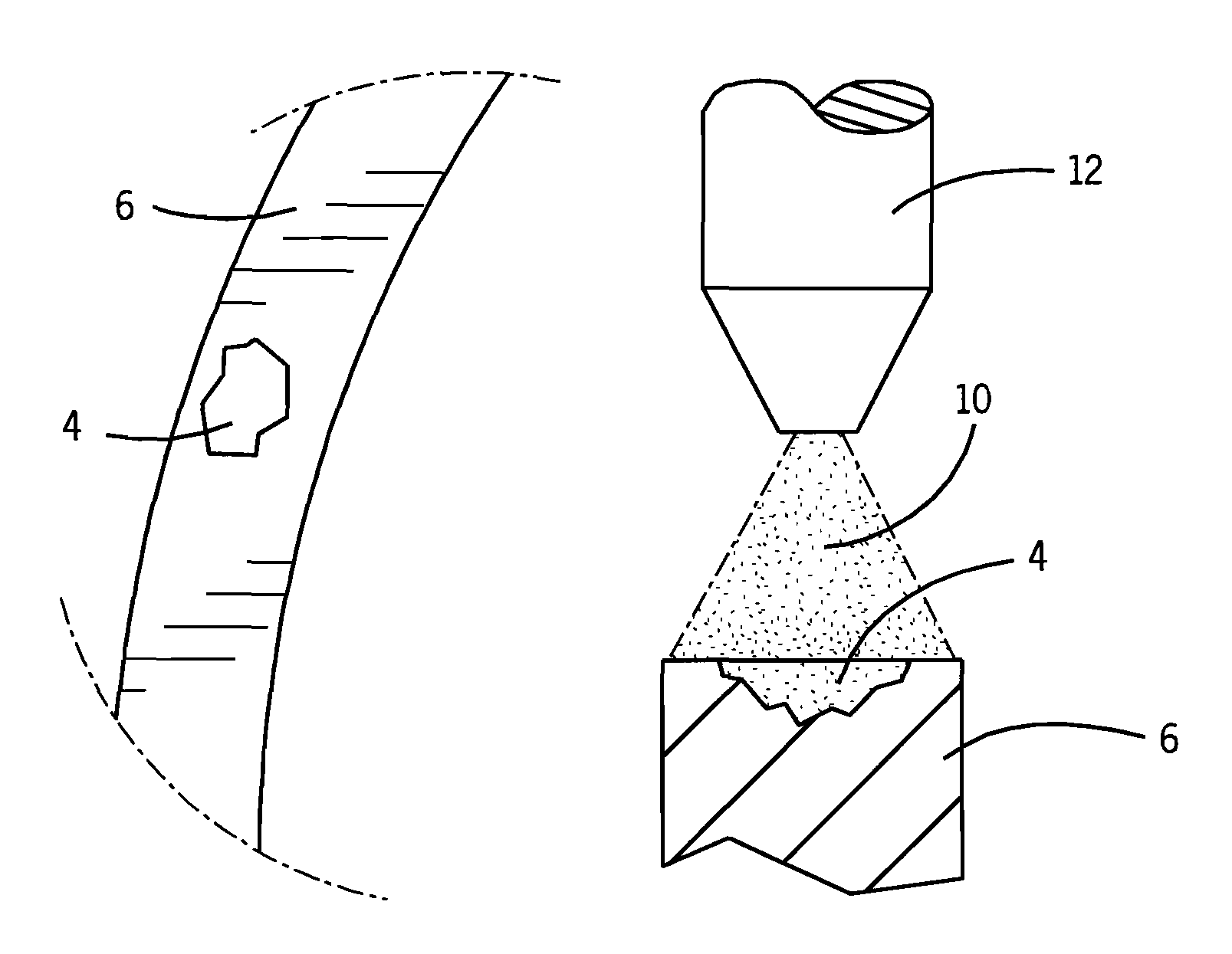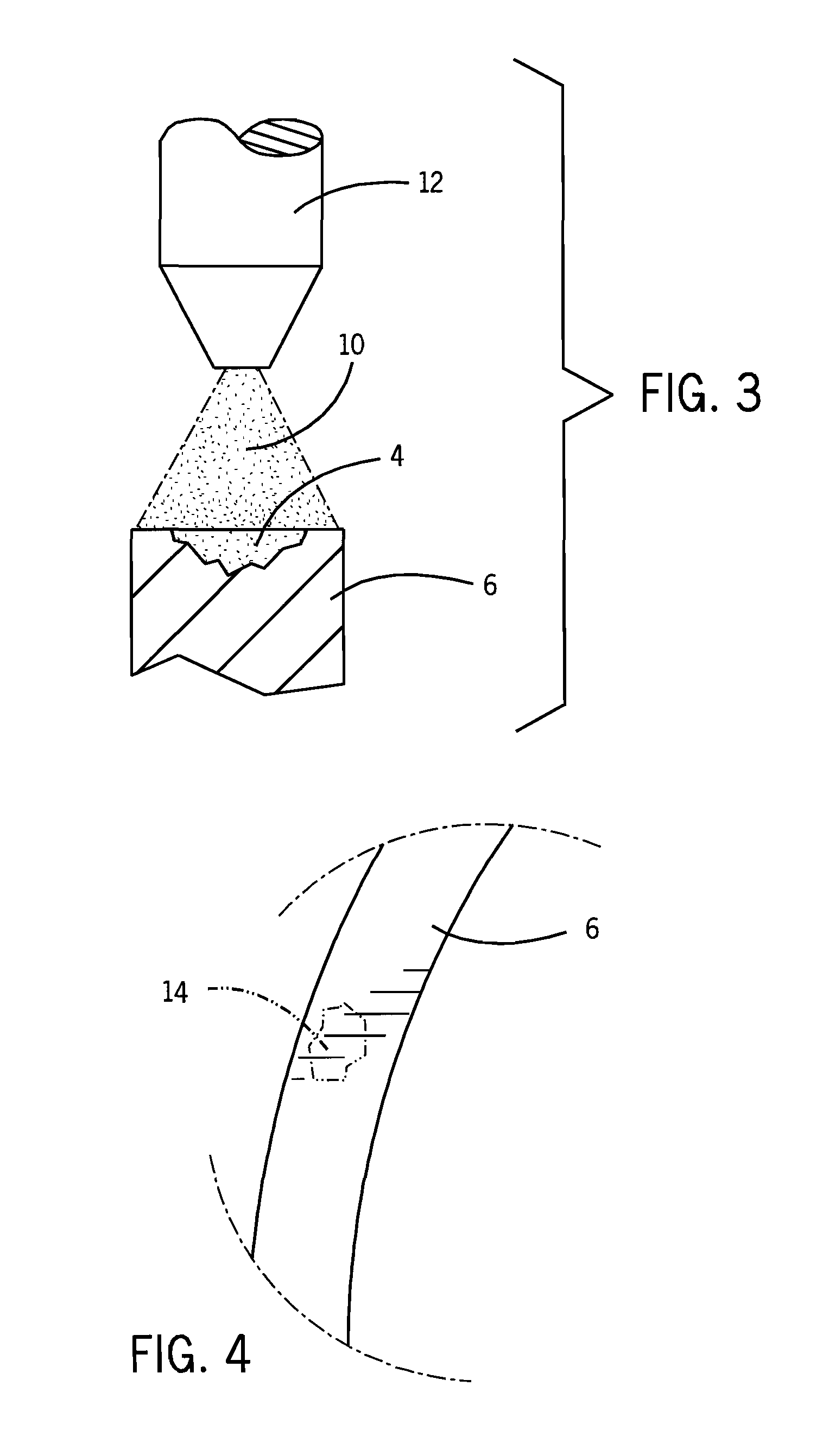Restoration process for porosity defects in metal cast products
a metal cast and porosity technology, applied in the field of metal cast product porosity defect restoration process, can solve the problems of failure of many parts, surface porosity defects in sand casting, and surface porosity defects in cast parts, so as to reduce the number of parts. the effect of porosity and small porosity
- Summary
- Abstract
- Description
- Claims
- Application Information
AI Technical Summary
Benefits of technology
Problems solved by technology
Method used
Image
Examples
Embodiment Construction
[0022]A restoration process for repairing surface porosity defects on a surface of a cast component or on a sealing surface is described below. Referring to FIG. 1, a component 2 may be cast using the lost foam casting method. The lost foam method is used to cast a variety of complex shapes, such as a hydraulic manifold casting, but sometimes yields a number of surface porosity defects in the final cast article. However, other casting processes also yield surface porosity defects, including die casting, sand casting and permanent mold casting; therefore, the present application may be used for any type of cast product.
[0023]Surface porosity defects may be revealed when the component 2 is machined subsequent to casting. Surface porosity defects 4 often result from the entrapment of air at the molten metal front during the lost foam casting process. However, as mentioned, surface porosity defects may also be present in other casting processes resulting from e.g., precipitation of hydr...
PUM
| Property | Measurement | Unit |
|---|---|---|
| diameter | aaaaa | aaaaa |
| diameter | aaaaa | aaaaa |
| porosity | aaaaa | aaaaa |
Abstract
Description
Claims
Application Information
 Login to View More
Login to View More - R&D
- Intellectual Property
- Life Sciences
- Materials
- Tech Scout
- Unparalleled Data Quality
- Higher Quality Content
- 60% Fewer Hallucinations
Browse by: Latest US Patents, China's latest patents, Technical Efficacy Thesaurus, Application Domain, Technology Topic, Popular Technical Reports.
© 2025 PatSnap. All rights reserved.Legal|Privacy policy|Modern Slavery Act Transparency Statement|Sitemap|About US| Contact US: help@patsnap.com



